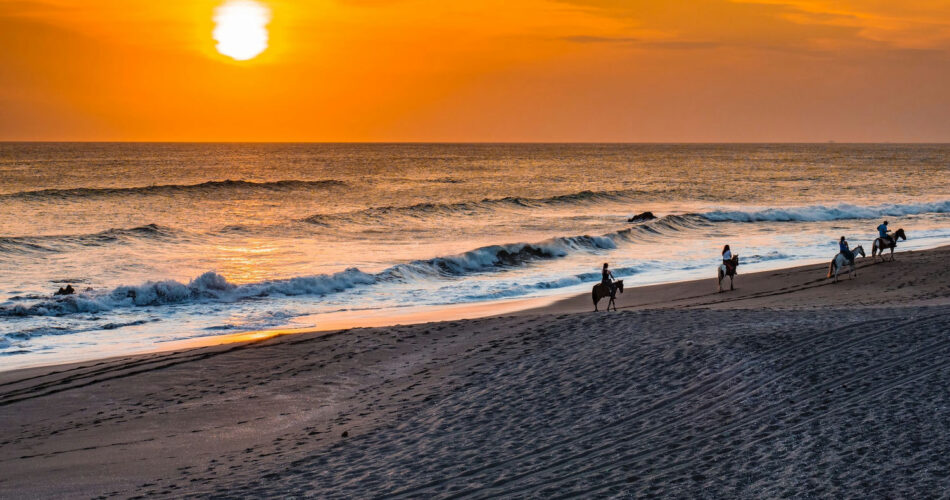The best time to visit Nicaragua is during the dry season (December to April) or the rainy season (May to November). During the dry season, the countryside is green and lush, rivers and waterfalls are at their most powerful, and prices are lower. During the rainy season, there are fewer tourists and more cultural and religious traditions, such as La Purisima, a religious festival with parades, music, dancing, and altars made of different colours.
Nicaragua is a great place to visit for any kind of traveller due to its natural beauty, rich culture, and friendly people. It is safe to go there as long as you take common-sense precautions, such as avoiding certain neighbourhoods at night and not showing off expensive items. It is a country full of surprises, and the best time to go depends on what you want to do.
Welcome, fellow travellers and people who like to try new things! We’ll talk about the best time to visit Nicaragua today. Nicaragua is the place to go if you want to visit a place with beautiful landscapes, a lively culture, delicious food, and friendly people. This small country in Central America is a hidden gem that is just waiting to be discovered, and the best part is that it can be enjoyed all year long.
So, why is Nicaragua such a great place to go on vacation? First of all, it has some of the most beautiful natural sights in the world, like tall volcanoes, clear lakes, and untouched beaches. Its colonial cities and charming towns are full of history and culture, and its lively markets and festivals are a treat for the senses.
But let’s get to the point: when is the best time to go to Nicaragua? Well, it depends on what you want to find. If you love the sun, the dry season (December to April) is the best time to visit. During these months, it’s usually hot and dry, and there aren’t many clouds in the sky. This is a great time to go to the beach, surf, or travel around the country.
On the other hand, if you want a more real experience, you should go during the rainy season (May to November). Even though it can rain a lot during these months, the countryside is green and lush, rivers and waterfalls are at their most powerful, and prices are usually lower. Also, there are fewer tourists, so you’ll have more of Nicaragua to yourself.
But let’s not forget that Nicaragua is a country with a lot of cultural and religious traditions, many of which are celebrated throughout the year. For example, if you go to Nicaragua in November, you can see “La Purisima,” one of the country’s most important cultural events. This is a religious festival with parades, music, dancing, and altars made of different colours. It’s a one-of-a-kind opportunity you won’t want to miss.
I know what you’re going to say: “What about safety, though? Is it safe to go to Nicaragua?” The answer is yes, but you should be careful. Like any country, Nicaragua has its share of crime and safety issues, but as long as you take common sense precautions (like avoiding certain neighbourhoods at night and not showing off expensive items), you should be fine. Let’s be honest: that’s true for most places in the world.
So, whether you love the sun or the rain, want to learn about history or have a lot of fun, Nicaragua has something for you. It’s a country full of surprises, and the best time to go depends on what you want to do. So, tell me, fellow travellers: What do you hope to get from a vacation? Do you like to hang out at the beach or climb mountains? A fan of food or history? No matter what you say, Nicaragua has something to offer.
Best Time To Visit Nicaragua For Weather
Do you want to save money and avoid crowds, or do you care more about perfect weather and clear skies? Let me help you figure out what you can do.
If you are on a tight budget, you should go to Nicaragua from May to October, which is the rainy season. During this time, prices are at their lowest, making it a great choice for people who want to backpack or travel for a long time. Plus, even though school is out in the northern hemisphere during the summer, there will be fewer tourists, so it will be quieter. Just keep in mind that it might not be the best time to visit if you want to hike in remote areas.
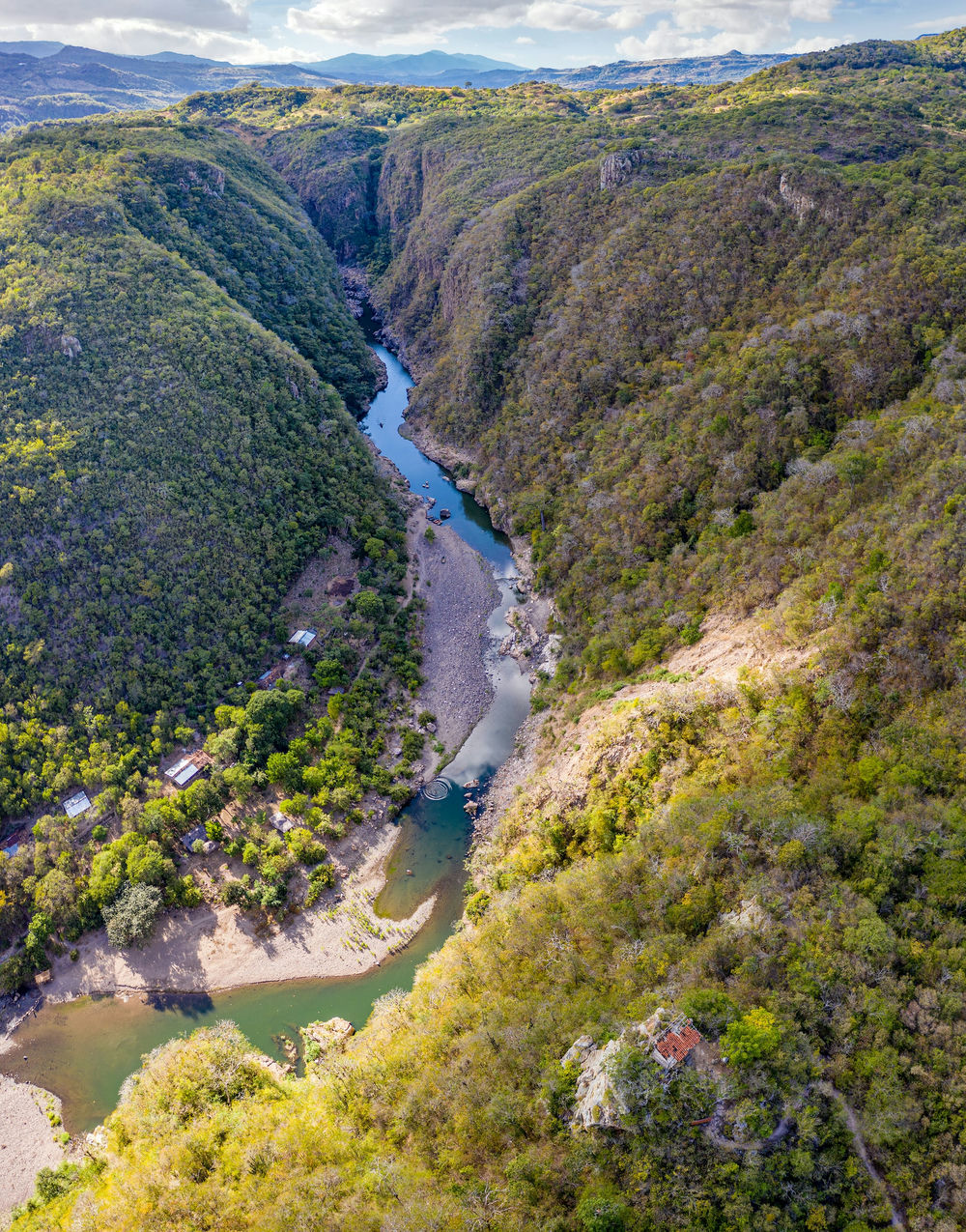
Somoto Canyon, Nicaragua
If you want a beach vacation, you should avoid the Atlantic coast in September and October, when hurricane season is in full swing. On the other hand, the weather on the Pacific coast is usually clear in the morning and stormy in the afternoon. If you want cooler weather, September and October are the best times to go to the central mountainous areas of Nicaragua. Because they are higher up, they don’t get as hot and don’t get as much rain as other places.
The best time to go to the rainforests in the lowlands of the Caribbean is between February and April. It can get very hot at the end of the dry season, with daytime temperatures of 34 °C or higher. But if you want the best weather, you should go from November to April, which is the dry season. This is a great time to visit Nicaragua because the skies will be clear, and the weather will be just right. But be ready to pay more for lodging, transportation, and tours.
If you’re a backpacker or a long-term traveller who doesn’t mind taking risks, the rainy season from June to November could be a great time to visit Nicaragua. But people who plan to stay for about two weeks should trust the best travel time. The weather can make it hard to travel, and there is also a chance of hurricanes from July to October.
Nicaragua’s climate
Warm temperatures are typical in Nicaragua due to the country’s tropical climate. Conditions, however, can range widely from place to place and season to season. Let’s examine the climatic conditions of Nicaragua in greater detail so that you can organize your trip better.
January and March, the driest months of the year in Nicaragua, fall within the country’s dry season, which extends from November to April. Warm sunshine makes this a great time for outdoor adventures and beach trips. On the other hand, the dry season can be very hot, with average daytime highs of 34 degrees Celsius or higher. Make sure you bring lots of water and sunscreen.
In Nicaragua, the rainy season lasts from May to October, with the heaviest downpours happening in September and October. While the rainy season isn’t great for lounging on the beach, it’s ideal for exploring the outdoors. The rainy season is the best time to go hiking and see Nicaragua’s beautiful landscapes because the forests are at their greenest then.
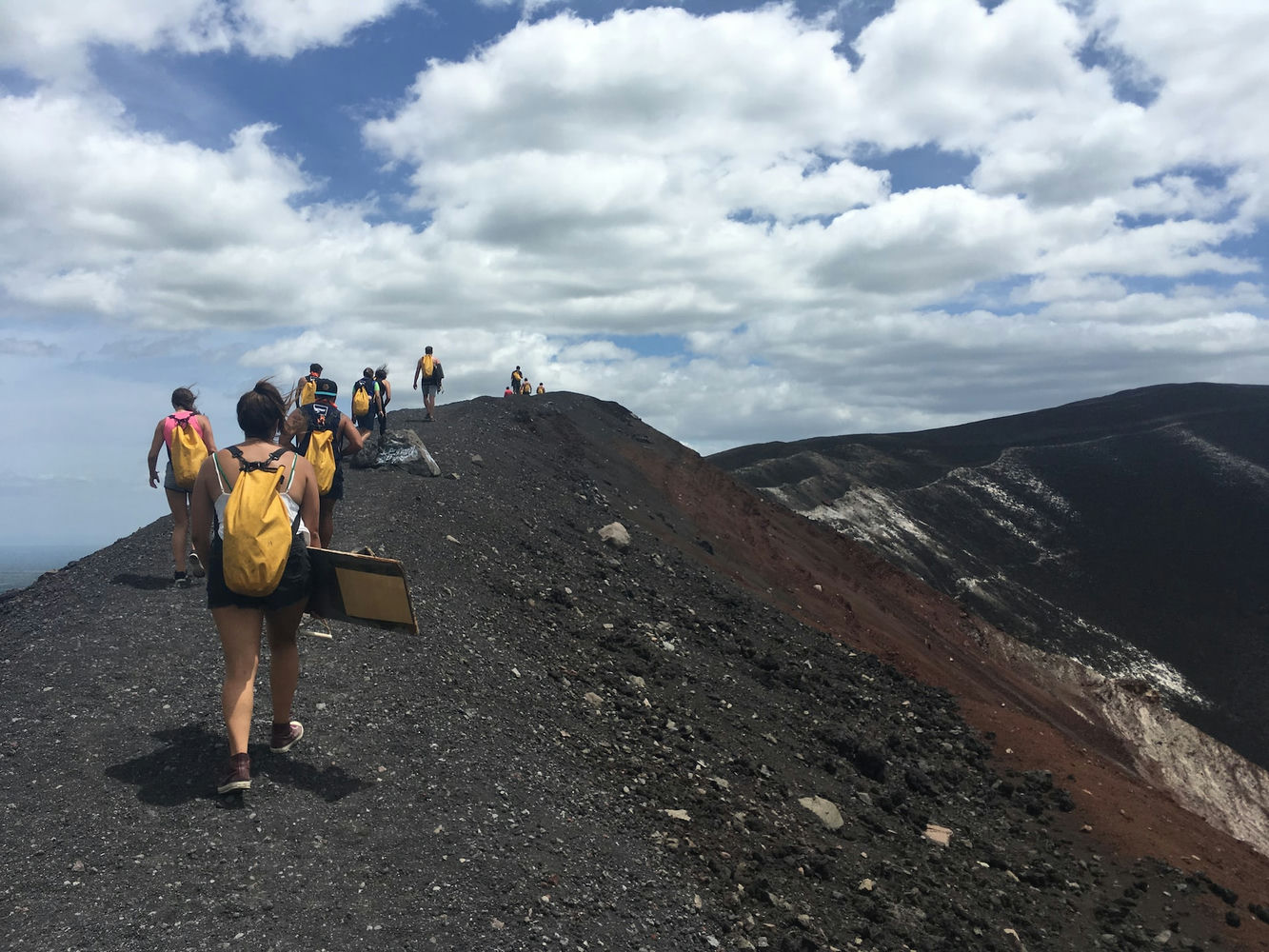
Sendero al Crater, Nicaragua
The weather will be very different in one part of the country compared to another. Clear skies in the morning give way to afternoon thunderstorms along the Pacific coast, while the Atlantic coast gets drenched 365 days a year. With their higher elevation and irregular rainfall, the central mountainous regions of Nicaragua are a great choice for those in search of milder temperatures.
It’s also important to note that the Atlantic coast of Nicaragua is vulnerable to hurricanes. If you are concerned about your safety, you should postpone your trip to the country until after the hurricane season (which runs from June to November).
The Dry And Rainy Season In Nicaragua
View this post on Instagram
Nicaragua may be known as the land of eternal swell, sunshine, and all-day offshores, but like everywhere else in the world, Nicaragua has seasons. We don’t have the weather and seasons that most of us are used to in the Northern or Southern Hemispheres (spring, summer, winter, and fall). In Nicaragua, there are two distinct seasons: the rainy and dry seasons. This is because of the country’s close proximity to the equator.
Tropical climates are found in countries near the equator. Seasonal changes are caused by changes in rainfall patterns, not by sharp changes in temperature. The length of the days is also the same all year long because Nicaragua is close to the equator. This means that sunrise and sunset will happen around the same time every day, no matter what time of year it is.
From June to October, Nicaragua has its rainy season. It’s raining everywhere in the country. But if you don’t mind bringing an umbrella, this may be the best time to visit Nicaragua on a budget since hotels and flights are usually the least expensive. Hard-core surfers love the rainy season. During this time, all of the spots near our Popoyo surf camp light up swell, so it’s a great time to catch deep barrels and walls you can carve.
When full rivers flow into the ocean, they create stable sandbars that make good waves, and there are more waves every day than you could ever imagine. During the rainy season, when people go to Nicaragua, it rains every day, usually for about an hour each afternoon. The rest of the day is filled with sunshine. The countryside has a lot of lush green plants, and the animals are out and about. It’s a great time to see Nicaragua’s natural beauty because the days are a little bit cooler.
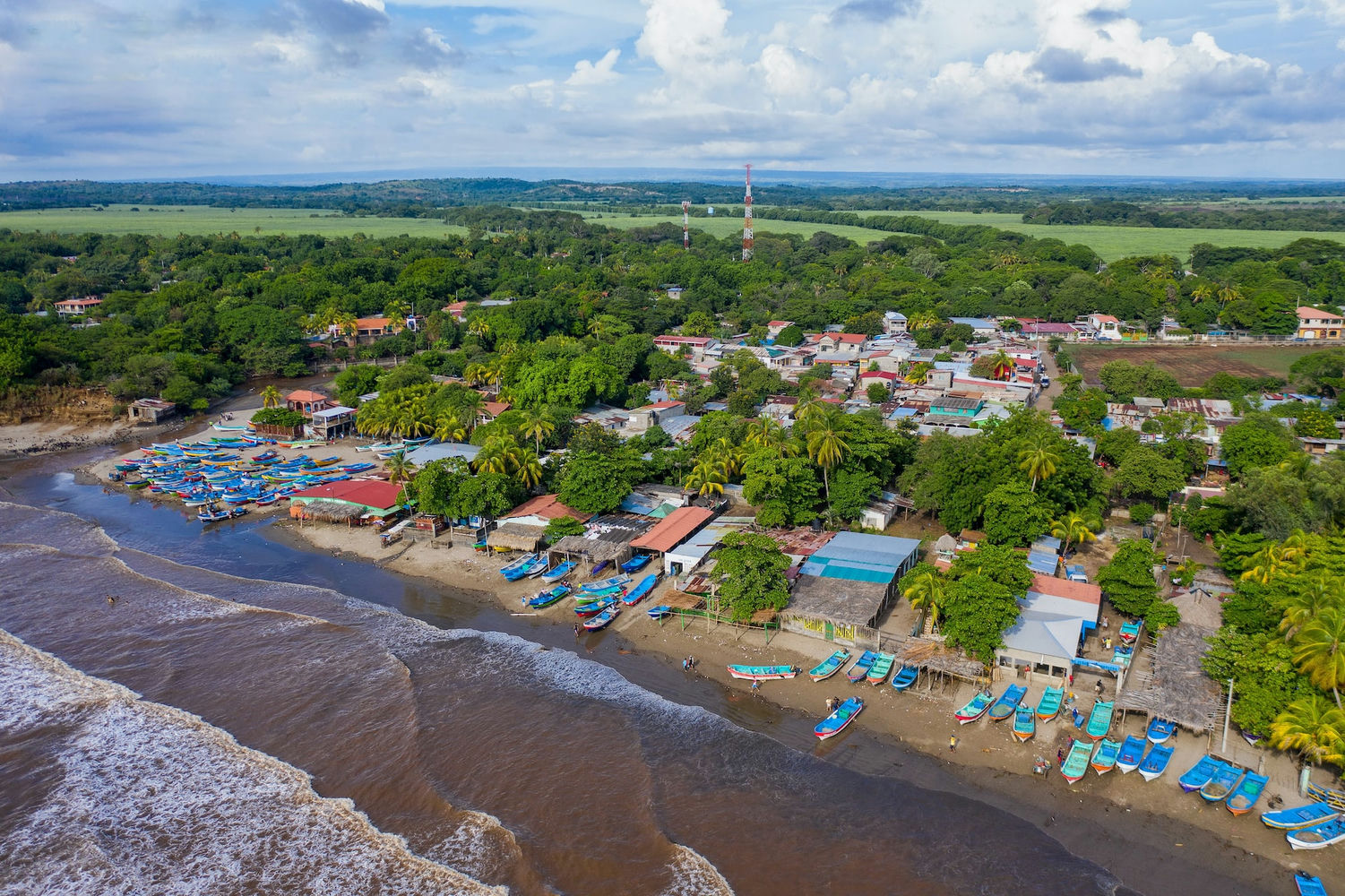
Masachapa, Nicaragua
On the other hand, Nicaragua has a dry season from November to April, when it hardly ever rains. During this time, travellers to the country can expect blue skies and nearly twelve hours of sunshine every day. The offshore winds keep blowing all day, and a manageable swell from the huge Pacific Ocean keeps coming in.
Even though there are still plenty of waves for people who want to get barreled, the dry season has a lot of waves that are good for beginners and people who are still learning and getting better. The slight rise in temperature is also tempered by the constant breeze from the ocean. This makes each sunny day pleasant and great for outdoor activities. In the south of the country, where our Popoyo surf camp is, offshore winds blow all day long.
Nicaragua is close to the equator, so there is swell all year long. Even when it’s dry, the Papagayo winds start to blow, turning Northern Nicaragua into an offshore playground like the one in the south. Beginners and intermediate surfers can improve their skills and move forward on less dangerous waves during the dry season.
Beginners Bay, near Mag Rock, is close to our Popoyo Surf Camp. Even when there is a big swell, there is always an easy wave there. On the other hand, Popoyo will break with almost any small wave.
Best Festivals And Events In Nicaragua
Are you ready to spice up your trip to Nicaragua? Well, the best way to do that is to go to the country’s festivals. There’s a festival for everyone, whether you’re interested in culture, religion, or just love a good party. So, let’s talk about the best Nicaraguan festivals and events that you can’t miss.
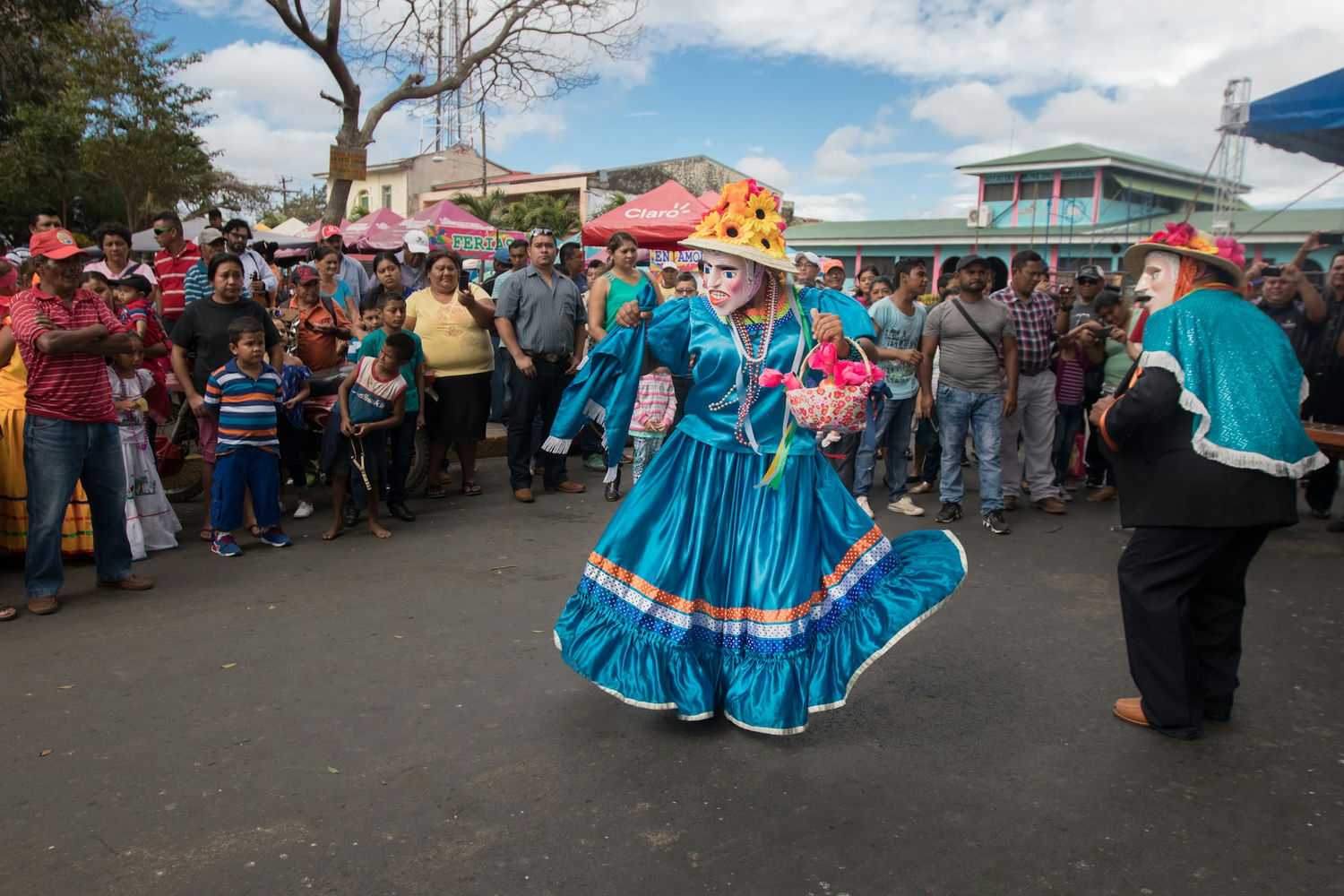
Fiestas a San Sebastian. Diriamba Carazo Nicaragua
First on our list is the Equestrians of Managua, a festival in the heart of Nicaragua’s capital. The celebrations going on all over the city are like nothing you’ve ever seen before. There are beautifully decorated marching horses, lively music, and a lively atmosphere that will leave you out of breath.
The Rio San Juan Carnival is next, and it takes place in the charming town of San Carlos. This party has a spectacular parade of water floats, handmade goods, and a lot of food and drinks. Get ready to dance the night away with the locals and enjoy the colourful atmosphere of this carnival.
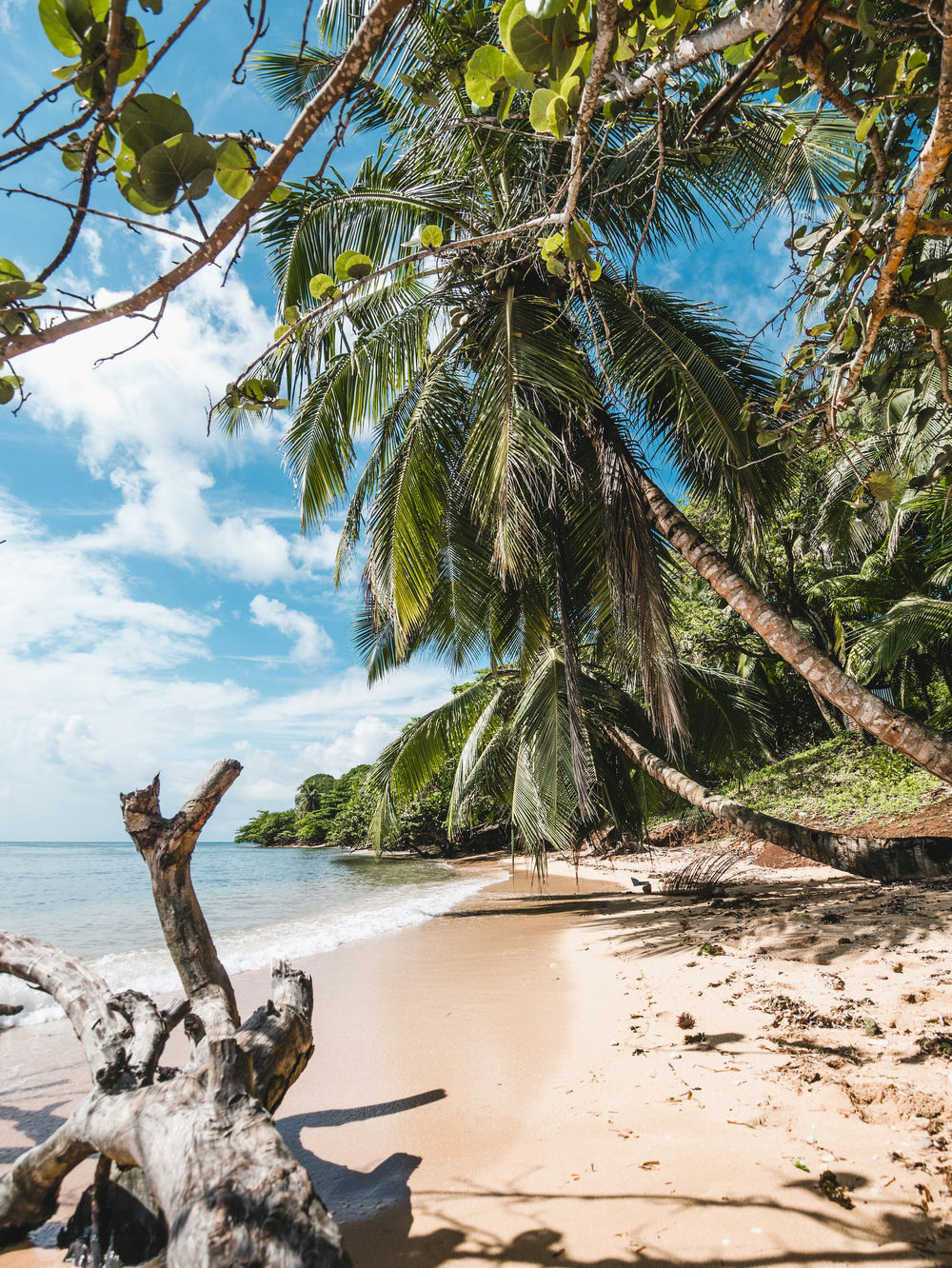
Little Corn Island, Nicaragua
The Latin American Surfing Competition is a must-see event for anyone who likes surfing. This competition is held at Playa Maderas near San Juan del Sur. The best surfers in the area get together to show off their skills on the waves. This event takes place at the end of November and is great for people who want to catch some great waves and enjoy the holiday spirit.
Last but not least, people all over Nicaragua celebrate three religious holidays: La Judea, La Griteria, and La Purisima. These festivals happen at different times of the year and give a unique look into the country’s religious traditions. From parades to fireworks to traditional songs, these festivals are a great way to meet locals and find out what these events mean to them.
Best Time To Visit Nicaragua For Surfing
Hey, surfers! Are you itching to ride the perfect wave in Nicaragua? So, you’re in the right place. Let’s talk about the best time to go surfing in Nicaragua so you can ride the biggest, worst waves and show everyone who’s in charge.
Surfing is best between the end of March and the end of September when the waves are consistently waist-to-head high. During this time, southern swells start to come in, and over the next few months, the surf swell gets bigger. And who doesn’t like a good build-up to a climax? It’s like waiting for Christmas morning, except you get killer waves instead of presents.
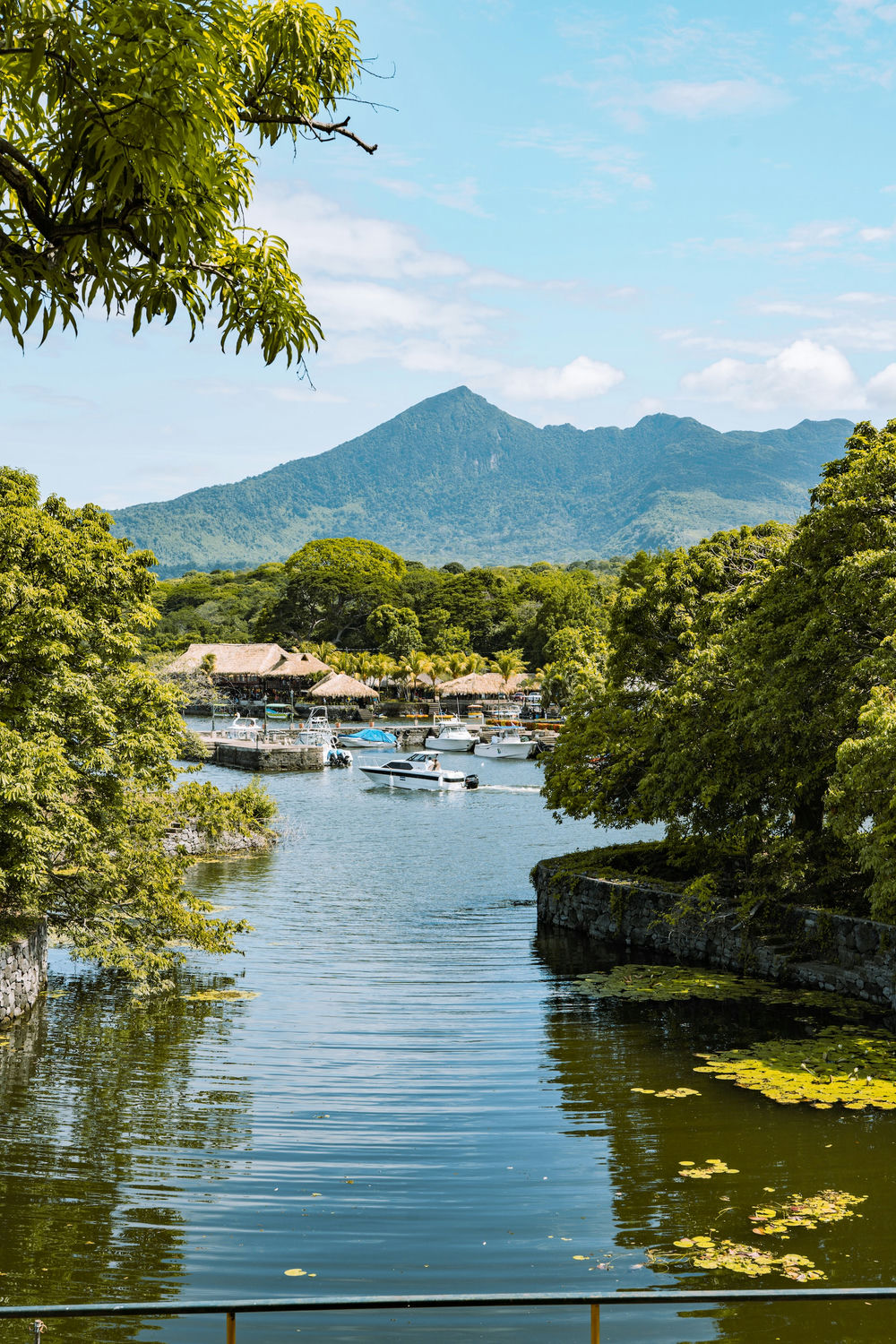
Granada Granada, Nicaragua
April is a great time to avoid crowds and catch good waves. Only during Semana Santa, or “Holy Week,” which is the week before Easter, do Nicaraguans go to all of the beaches. It can be fun, but get ready for a wild beach party with tens of thousands of people.
In Nicaragua, the best time to surf is from May to August. The waves are always there, and from June on, you can usually expect big days. This time of year is even better because of the Lake Effect. Lake Nicaragua makes steady offshore winds all day long, which is great for surfing. It’s as if the gods of weather are on your side.
As September and October come, the rainy season reaches its peak. But don’t worry. There is still good swell in the first two weeks of September, so you can still catch some gnarly waves. Who doesn’t like to surf when it’s raining? Just know that you might get wet, but isn’t that the point?
If you’re a beginner surfer or just starting, the best times to visit Nicaragua are November through January and March through May. In November and December, waves that are waist-to-head high can happen, which makes it a great time to learn. Also, the water gets a little cooler, which is nice on hot days.
The Top Must-Do Experiences In Nicaragua
Conclusion
In the end, it can be hard to figure out when the best time to visit Nicaragua. You have to think about the weather, your budget, and the things you want to do. But if you go to this beautiful country at the right time, you can have a vacation you’ll never forget.
So, have you picked a time to go to Nicaragua? Are you a traveller who likes to stick to a budget, or are you willing to spend more for good weather? Want to surf, hike, or just relax on the beach? No matter what you want to do, you should think about the different seasons and their pros and cons. If you’re still not sure, think about what’s in the middle. The months of March and April and October and November can be a good compromise. You can enjoy nice weather, fewer people, and lower prices.
Overall, Nicaragua is a place that has something to offer every month of the year. Whether this is your first trip or your tenth, you won’t be disappointed. Nicaragua should be on your list of places to visit because it has beautiful landscapes, a rich culture, and friendly people.
So, why don’t you just do it? Book your plane tickets and get ready to explore this Central American gem. Nicaragua has everything you could want, whether trying something new or taking it easy. You can make the most of your trip to this beautiful country if you plan.
Frequently Asked Questions (FAQs):
Is it better to visit Nicaragua during the wet or dry season?
It depends on your priorities. If you’re on a budget, the wet season from May to October is the best time to visit Nicaragua since prices are lower. However, the dry season from November to April offers more consistent weather.
What is the best time to visit Nicaragua for surfing?
The best time to visit Nicaragua for surfing is from May through August. During this time, the southern swell is consistent, and offshore winds from Lake Nicaragua make for great surfing conditions.
Is it safe to travel to Nicaragua during hurricane season?
Hurricane season in Nicaragua is from July to October. While it’s not recommended to travel to Nicaragua during this time, backpackers and long-term travellers can take the risk. However, “normal” Nicaraguan travellers with stays of around two weeks should rather trust the best travel time to avoid unstable weather conditions.


